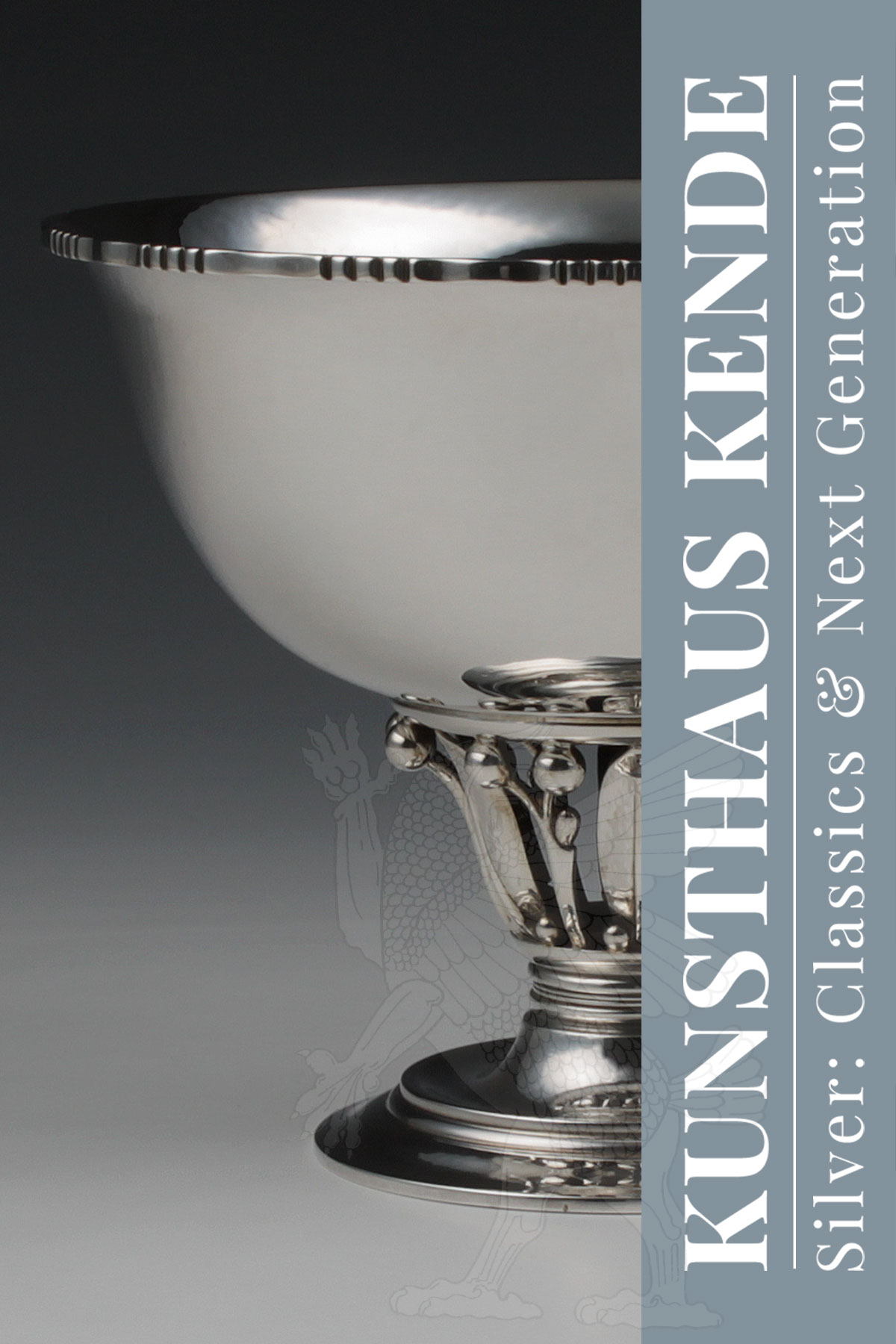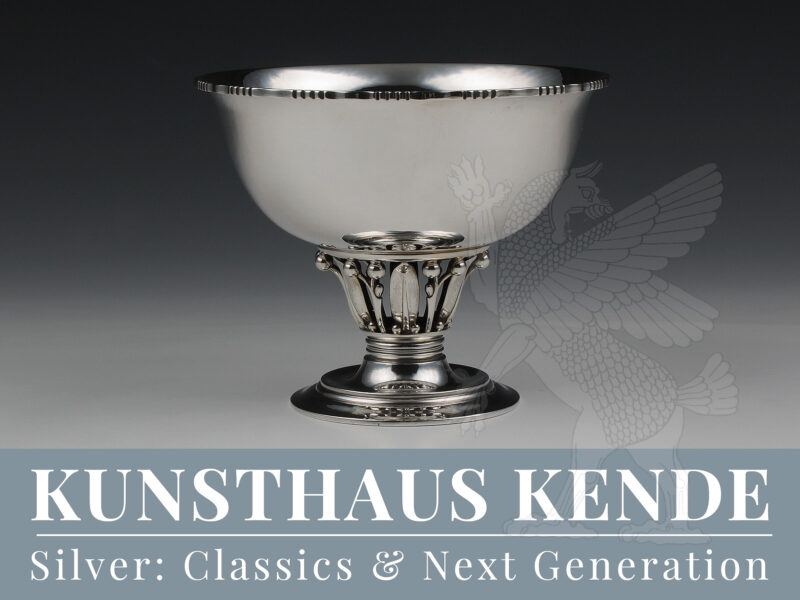Item number: 58118
A sterling silver footed “Louvre” bowl #180B,
Copenhagen circa 1950 by Georg Jensen
A medium-sized Georg Jensen sterling silver footed bowl #180B, designed by Georg Jensen, 1912. Executed by Georg Jensen silversmithy circa 1950.
Excellent, finely polished condition with old surface. No monogram or other kind of personal inscriptions. The subtle martelé still wonderfully preserved and not overpolished, furthermore there are no repairs or damages to report.
14.1 cm / 5.55″ diameter, 11.4 cm / 4.48″ tall; 311.6 g / 10.01 oz
The special nature of the Louvre Bowl and its significance for Georg Jensen’s oeuvre
This silver bowl has achieved international fame as the “Louvre Bowl” and is one of Georg Jensen’s most famous designs, which had a lasting impact on his reputation as a silversmith and designer. The Louvre Bowl owes its name to the fact that the curators of the Musée du Louvre in Paris recognised the outstanding design achievement of the work and acquired it for the collection of the Louvre in 1914, where it still can be found today. This purchase was one of the most important stages in Georg Jensen’s development and consolidated his reputation as an outstanding silversmith and designer.
Georg Jensen intended to pursue a career as a sculptor at a young age before achieving unexpected success with his silverware. Born in 1866 as the son of a knife grinder in Raadvad, north of Copenhagen, Georg Jensen began an apprenticeship as a silversmith at the age of 14 and became a journeyman in 1884. From 1887 to 1892 he studied sculpture at the “Kongelige Danske Kunstakademi” (“Royal Danish Academy of Art”), followed by studies in pottery. However, economic difficulties forced Georg Jensen to abandon his artistic ambitions in sculpture and pottery and to devote himself to silver again. Therefore, he worked in Mogens Ballin’s silversmithy from 1901. Nevertheless, the knowledge he acquired at the academy was later of great benefit when he combined it with his expertise in silversmithing and thus revived the lost tradition of the classical craftsman. His designs for jewellery and silverware, strongly influenced by Scandinavian Art Nouveau, soon met with public approval, encouraging Georg Jensen to leave his position with Mogens Ballin and establish his own workshop in Copenhagen in 1906.
As a silversmith, Georg Jensen combined a high level of craftsmanship and artistic skill with excellent commercial sense and over the years opened his shops in cities such as Paris, London and Berlin. His final international breakthrough came in 1924 with the opening of a shop on 5th Avenue in New York. Georg Jensen’s significance for Danish art in the 20th century is undisputed and his artistic legacy still continues today. Among other things, the Danish Post Office issued a commemorative stamp in his honour.





